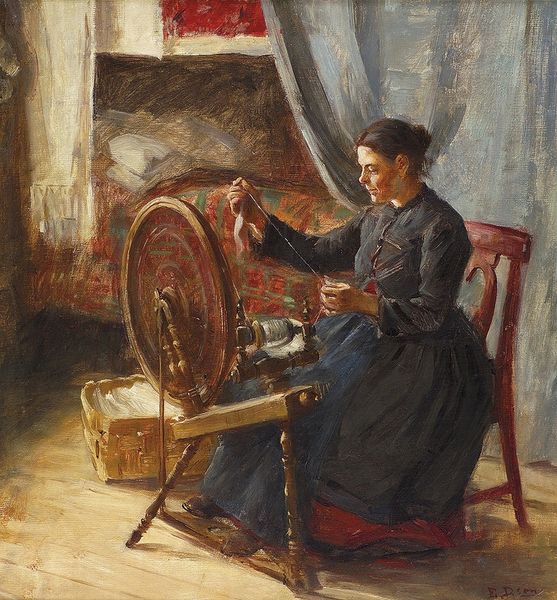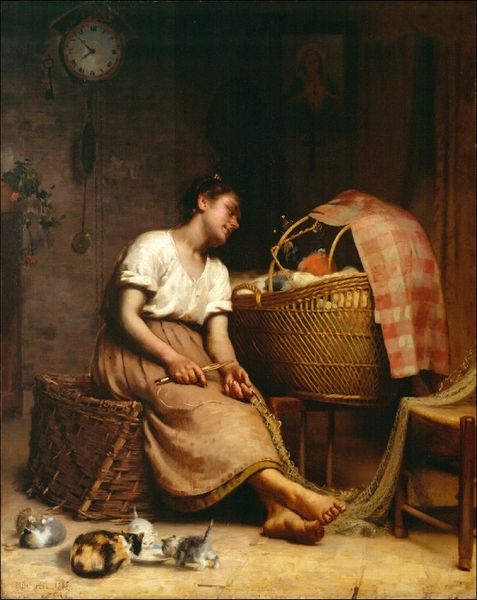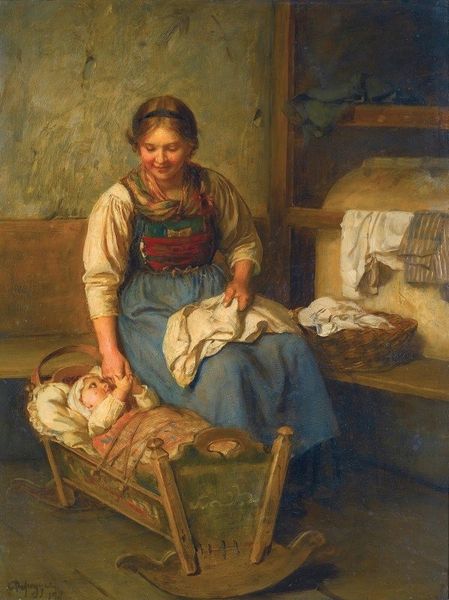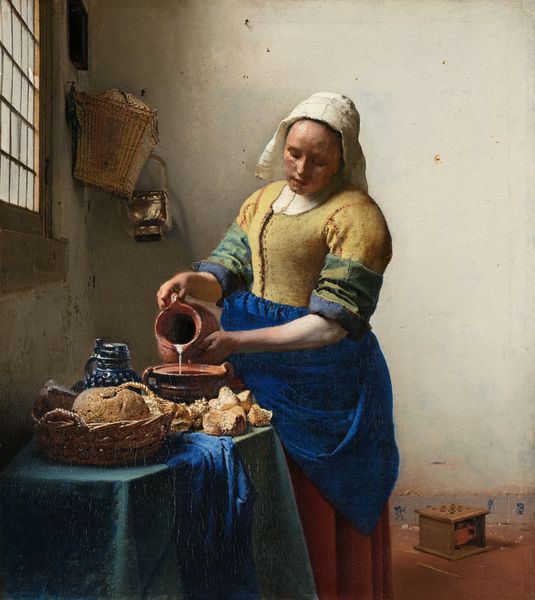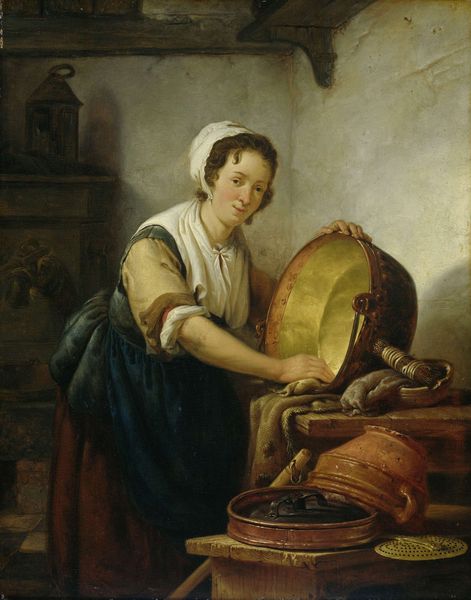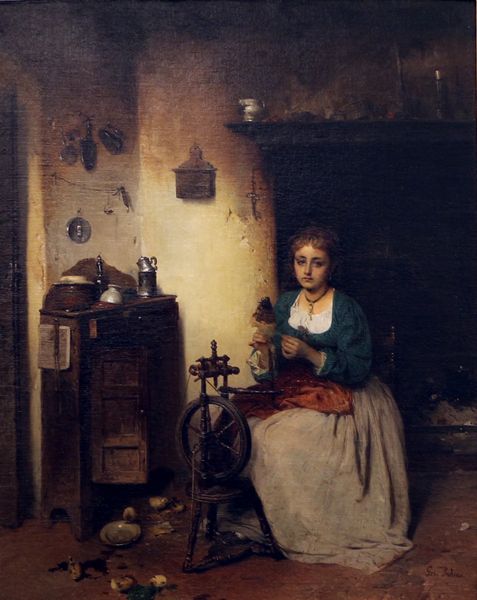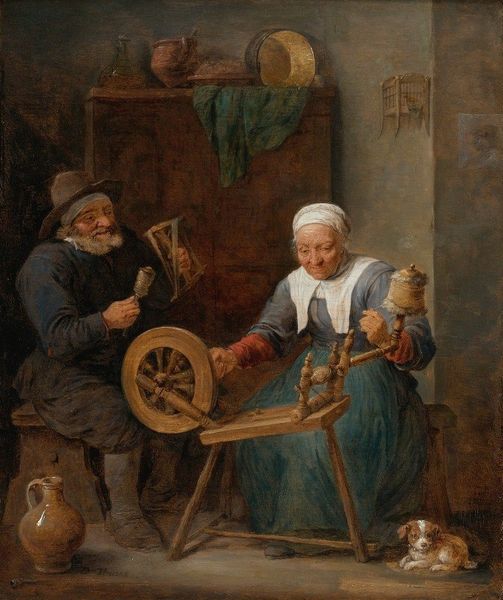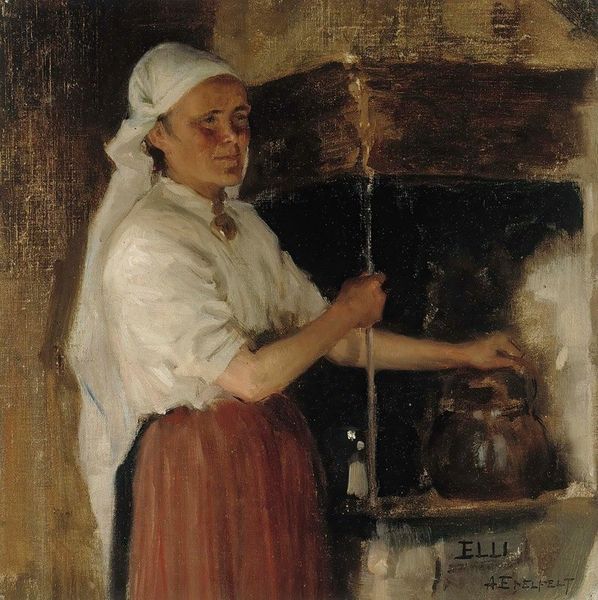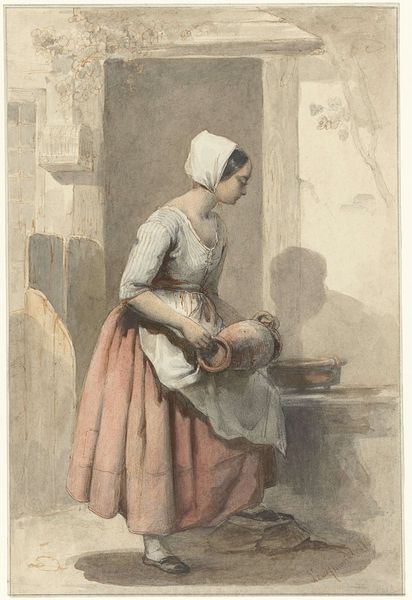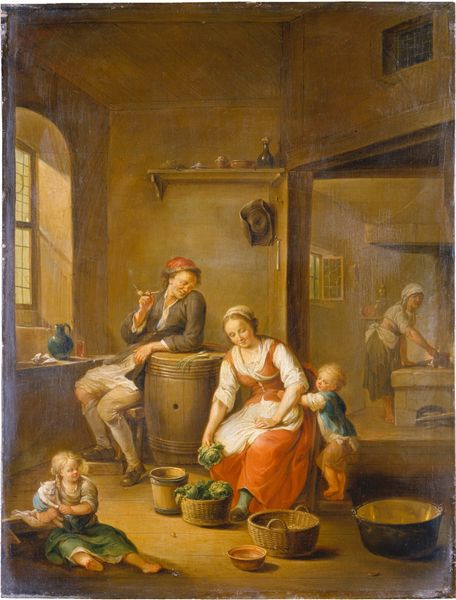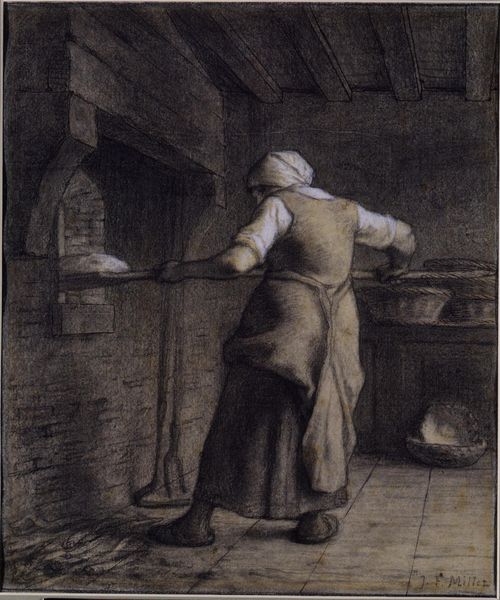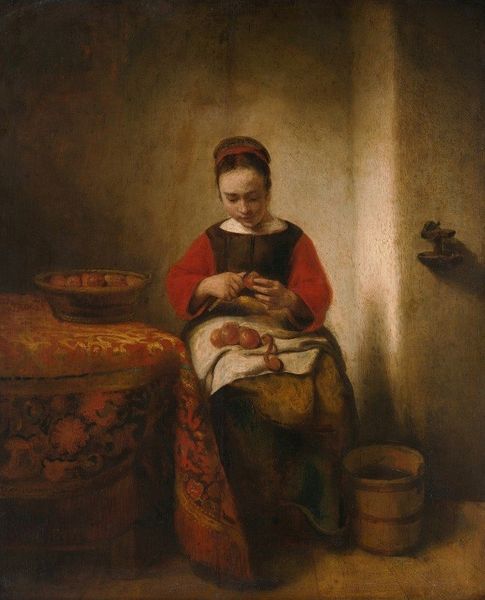
Copyright: Public Domain: Artvee
Editor: This is Jean-François Millet's "Woman Spinning," painted sometime between 1855 and 1860. The oil paint application feels smooth and the colours convey such a humble domesticity. What strikes me is the figure's absolute concentration on her work. What can you tell me about its significance? Curator: Well, consider the context. Millet and other Realist painters were intentionally turning away from grand historical narratives and towards scenes of everyday life, particularly rural labor. In this period, industrialization was rapidly changing society. How do you think representing a woman engaged in this traditional craft resonated with audiences at the time? Editor: Perhaps as a comforting reminder of simpler times, before industrialization completely took over? Curator: Precisely. It was also a potent, if often romanticized, image of the peasantry gaining visibility, but it's not without its complications. Whose voices were being elevated, and for what purposes? We should ask whether representations of working women were truly empowering, or merely served other agendas in the urban sphere of influence. What do you notice about her positioning in the room, relative to us as the viewers? Editor: She's facing slightly away, so we observe her labor without really intruding, but there’s still an engagement through the precision and realistic representation, it is as if her labor and that of people around her were important. I hadn't thought of it that way. Thanks! Curator: These kinds of images participated in a larger cultural discourse, and questioning the motives and power dynamics in art and society allows us to appreciate art and think critically. It's always worthwhile to probe deeper!
Comments
No comments
Be the first to comment and join the conversation on the ultimate creative platform.
